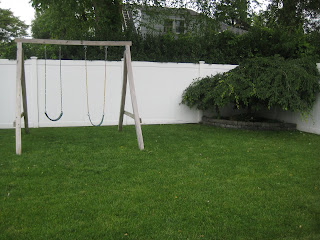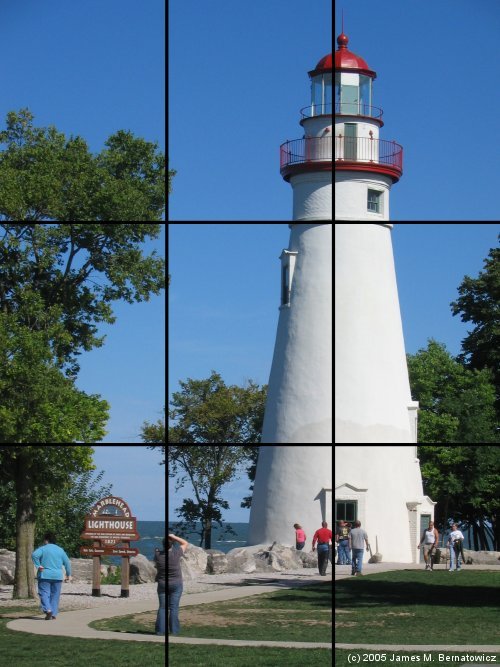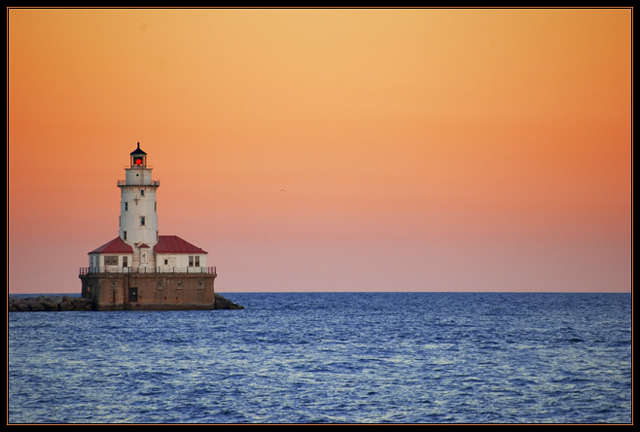Ben Moak
Steel Member
So you just got a camera did you?
Well hooray, you've landed yourself smack dab into the middle of a great hobby!
But you may now be looking as to what you can do to take those pictures from friendly snapshots, too photographic art.
Ok well maybe not "art" but you are looking to improve your photos.
And there is no better place to start, than composition.
To begin, when taking a picture you want there (most of the time) to be a definite subject, a photo that someone has too search for the main point is generally not a good photo

The above is a prime example of a picture with no definite subject, notice how your eyes aren't exactly attracted towards anything within the photo?

now this picture has a definite subject, clearly this is a picture of a lighthouse, better yet it also brings me to my next point, the rule of thirds.
Rule of thirds? dafuq is this, math?
Well not exactly, the rule of thirds is a guideline to follow that basically says try to keep the subject in one of the of the intersections of lines, it's much more interesting too look at a a subject with a decent background, which often times cannot be achieved with a center'd and head on perspective, really stuff just looks more artistic and is generally more pleasing to look at from one of thirds rather than the direct center.

those red points are generally what you should try to keep your subject on.
And on to my final point,
Keep your horizons horizontal, and your vertical shit vertical.
When shooting a landscape, or any picture really, it is best to keep the skyline or 'horizon' on a completely level platform, doing this makes whatver your looking at just look more 'natural' and not horizontal horizons just look plain awkward. Same thing goes for verticals, if you have a portrait or something the likes that is going to include a pole or tree in the foreground or background, keep it vertical. Like i said for the horizons, it would otherwise just look unnatural and out of place.

this photo both exemplifies vertical and horizontal placement, the light house is up and down, and the waterline/horizon is straight across.
Well thats pretty much all for now, keep in mind this is a very basic tutorial/guideline and should not be seen as a guide to be a professional, professional's are people who have pushed the boundaries and fundamentals and have done it well.
Well hooray, you've landed yourself smack dab into the middle of a great hobby!
But you may now be looking as to what you can do to take those pictures from friendly snapshots, too photographic art.
Ok well maybe not "art" but you are looking to improve your photos.
And there is no better place to start, than composition.
To begin, when taking a picture you want there (most of the time) to be a definite subject, a photo that someone has too search for the main point is generally not a good photo
The above is a prime example of a picture with no definite subject, notice how your eyes aren't exactly attracted towards anything within the photo?

now this picture has a definite subject, clearly this is a picture of a lighthouse, better yet it also brings me to my next point, the rule of thirds.
Rule of thirds? dafuq is this, math?
Well not exactly, the rule of thirds is a guideline to follow that basically says try to keep the subject in one of the of the intersections of lines, it's much more interesting too look at a a subject with a decent background, which often times cannot be achieved with a center'd and head on perspective, really stuff just looks more artistic and is generally more pleasing to look at from one of thirds rather than the direct center.

those red points are generally what you should try to keep your subject on.
And on to my final point,
Keep your horizons horizontal, and your vertical shit vertical.
When shooting a landscape, or any picture really, it is best to keep the skyline or 'horizon' on a completely level platform, doing this makes whatver your looking at just look more 'natural' and not horizontal horizons just look plain awkward. Same thing goes for verticals, if you have a portrait or something the likes that is going to include a pole or tree in the foreground or background, keep it vertical. Like i said for the horizons, it would otherwise just look unnatural and out of place.

this photo both exemplifies vertical and horizontal placement, the light house is up and down, and the waterline/horizon is straight across.
Well thats pretty much all for now, keep in mind this is a very basic tutorial/guideline and should not be seen as a guide to be a professional, professional's are people who have pushed the boundaries and fundamentals and have done it well.
